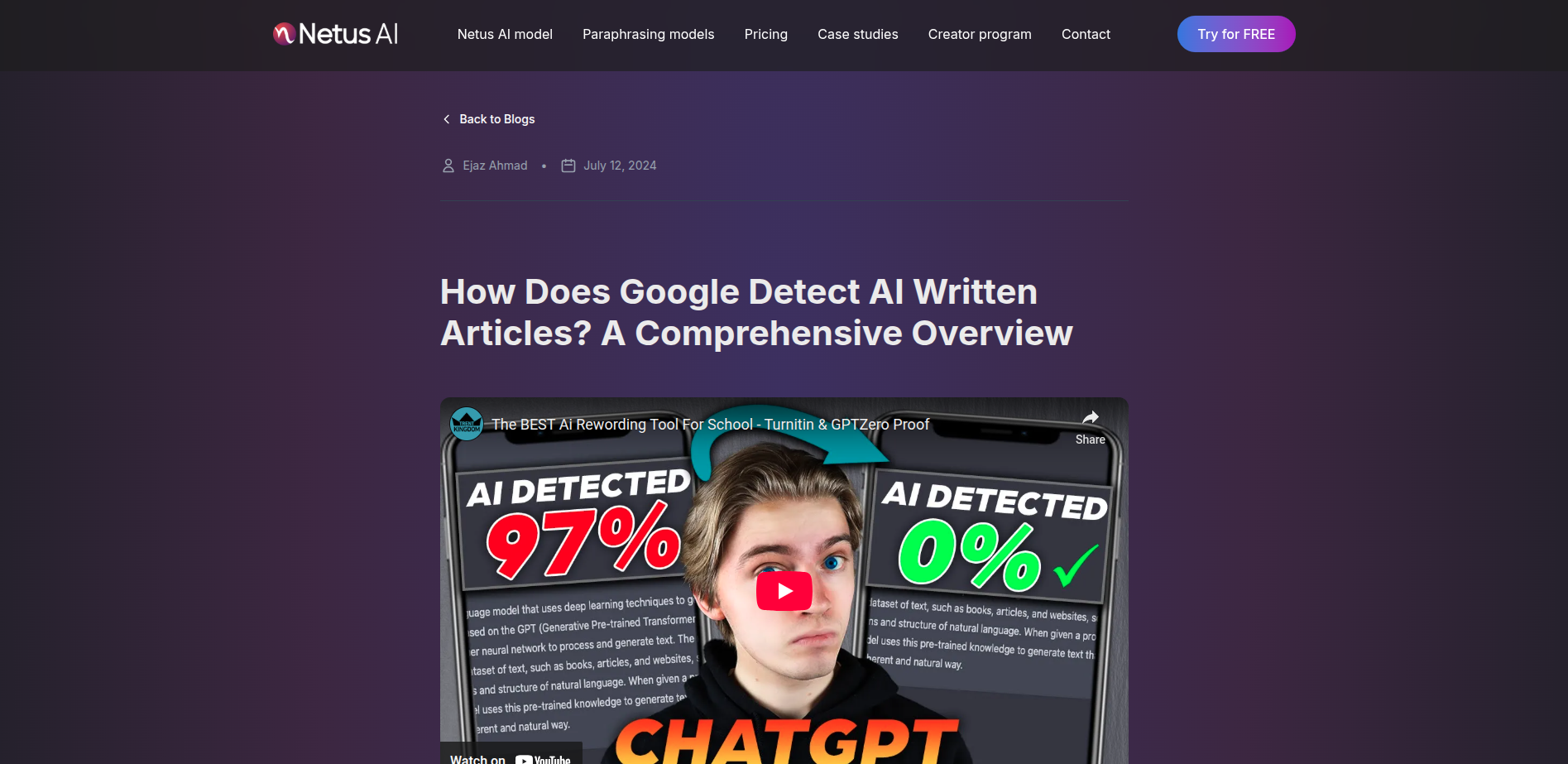How Does Google Detect AI Written Articles? A Comprehensive Overview
Ashley Merit
Content writer and editor for Netus.AI
Table of Contents
How Does Google Detect AI Written Articles? Google has been using artificial intelligence (AI) to detect and filter out low-quality content for years. However, with the increasing use of AI in content creation, the question arises: how does Google detect AI-written articles? In this article, we will explore the methods that Google uses to identify AI-generated content and the impact it has on search engine optimization (SEO).
One of the primary ways that Google detects AI-written articles is by analyzing the language and structure of the content. AI-generated articles often lack the natural flow and coherence of human-written content, making them easier to identify. Google’s algorithms are trained to recognize these patterns and flag content that appears to be generated by machines.
The rise of AI content creation has raised concerns about the impact on SEO. Some have speculated that AI-generated content could be used to manipulate search rankings by flooding the web with low-quality articles. However, Google’s detection methods make it difficult for AI-generated content to rank well in search results, ensuring that only high-quality content created by humans is rewarded.
Understanding AI-Generated Content
Evolution of AI Writing Tools
AI writing tools have come a long way since their inception. The first AI writing tool was developed in the 1950s, but it wasn’t until the 1990s that they started to gain traction. In the early days, AI writing tools were limited to simple tasks like filling in forms or generating simple reports. However, advancements in machine learning and natural language processing (NLP) have led to the development of more sophisticated tools.
One of the most popular AI writing tools is GPT-3 (Generative Pre-trained Transformer 3), which was released in 2020. GPT-3 is a language model that uses deep learning to generate human-like text. It has the ability to write essays, articles, and even poetry. GPT-3 is also capable of answering questions and completing tasks like translation and summarization.
Characteristics of AI-Generated Text
AI-generated text has some distinct characteristics that set it apart from human-written text. One of the most noticeable differences is that AI-generated text tends to be more repetitive. This is because AI models are trained on large datasets, which can lead to them repeating certain phrases or ideas.
Another characteristic of AI-generated text is that it can lack coherence. AI models don’t have the same understanding of context and nuance as humans do, which can lead to them producing text that doesn’t make sense or is irrelevant to the topic at hand.
Despite these limitations, AI-generated text has the potential to be very useful. It can save time and resources by automating tasks like content creation and translation. It can also help businesses to personalize their content to specific audiences by generating text that is tailored to their needs.
In the future, we can expect to see even more advancements in AI writing tools. GPT-4, the successor to GPT-3, is currently in development and is expected to be even more powerful than its predecessor. As AI continues to evolve, we can expect to see more sophisticated and nuanced AI-generated text that is indistinguishable from human-written text.
Google’s Approach to Detecting AI Content
Search Algorithms and AI Detection
Google uses complex search algorithms to detect AI-written content. These algorithms are designed to identify patterns and anomalies in the content that may indicate it was generated by an AI system. The algorithms look for specific characteristics such as repetitive phrases, unnatural sentence structures, and unusual word choices.
Google’s search algorithms are constantly evolving to keep up with advances in AI technology. The company employs a team of experts who work to refine the algorithms and ensure they are effective in detecting AI-generated content.
Role of E-E-A-T in Content Evaluation
Google also uses the E-A-T (Expertise, Authoritativeness, Trustworthiness) framework to evaluate the quality of content. E-A-T is an important factor in determining the ranking of a website in search results.
E-A-T is particularly important when it comes to AI-generated content. Google’s algorithms are designed to detect whether the content was written by an expert in the field or by an AI system. If the content is deemed to be of low quality or lacking in expertise, it may be penalized in search rankings.
In addition to E-A-T, Google also evaluates the technology used to generate the content. The company looks for signs that the content was generated using AI technology and takes this into account when determining the quality of the content.
Overall, Google’s approach to detecting AI content is based on a combination of advanced search algorithms and the E-A-T framework. By evaluating both the content and the technology used to generate it, Google is able to ensure that only high-quality, trustworthy content is displayed in search results.
Impact of AI Content on SEO and Rankings
AI Content and Search Engine Rankings
The use of AI in content creation has become increasingly popular, and it has raised concerns about its impact on search engine rankings. While search engines like Google have not explicitly stated how they detect AI-generated content, it is believed that they use machine learning algorithms to identify patterns and anomalies in the content.
AI-generated content can be beneficial for SEO if it is of high quality and relevant to the user’s search query. However, if the content is low quality or irrelevant, it can harm a website’s rankings. Search engines prioritize high-quality content that provides value to users, and AI-generated content is no exception.
SEO Strategies for AI-Enhanced Websites
To ensure that AI-generated content does not harm a website’s SEO, it is important to implement effective SEO strategies. Here are some strategies that can help:
- Use AI writing tools that generate high-quality content that is relevant to the user’s search query.
- Optimize the content for keywords and phrases that are relevant to the user’s search query.
- Ensure that the content is unique, original, and provides value to the user.
- Use structured data markup to help search engines understand the content and its context.
- Monitor the website’s rankings and make adjustments as needed to improve its SEO performance.
In conclusion, AI-generated content can have a positive or negative impact on a website’s SEO depending on its quality and relevance. By implementing effective SEO strategies, website owners can ensure that their AI-enhanced content provides value to users and improves their search engine rankings.
Best Practices for Content Creators Using AI
Maintaining Quality and Originality
As AI technology becomes more prevalent in content creation, it is important for content creators to maintain quality and originality in their work. Here are some best practices for achieving this:
- Choose a reputable AI tool: Not all AI tools are created equal. It is important to do your research and choose a tool that has a good reputation for producing high-quality content.
- Use AI as a tool, not a replacement: AI can be a great assistant in content creation, but it should not replace human creativity and critical thinking. Use AI to generate ideas and assist with writing, but make sure to put your own touch on the final product.
- Edit and proofread: AI-generated content may not always be perfect, so it is important to edit and proofread your work to ensure that it is of high quality and free from errors.
Balancing AI Assistance with Human Touch
While AI can be a valuable tool in content creation, it is important to strike a balance between AI assistance and human touch. Here are some best practices for achieving this:
- Use AI for repetitive tasks: AI can be great for tasks such as data analysis and formatting, which can be time-consuming and repetitive for humans.
- Use AI to generate ideas: AI can be a great source of inspiration for content ideas, but make sure to put your own spin on them to ensure originality.
- Incorporate human creativity: While AI can assist with content creation, it is important to incorporate human creativity and critical thinking to ensure that the final product is unique and engaging.
By following these best practices, content creators can use AI to enhance their work and maintain high standards of quality and originality.
Future of AI in Digital Content Creation
Advancements in AI and Content Generation
As AI continues to evolve, it is expected that the technology will become more sophisticated and capable of producing higher quality content. With advancements in deep learning and natural language processing, AI is becoming better at understanding human language and producing content that is more human-like. This will enable businesses to create content more efficiently and at a lower cost, while still maintaining a high level of quality.
One of the most significant advancements in AI and content generation is the ability to create personalized content. AI algorithms can analyze user data to understand their preferences and create content that is tailored to their interests. This can help businesses to create a more engaging and personalized experience for their customers, which can lead to increased loyalty and sales.
Ethical Considerations and Industry Standards
As AI becomes more prevalent in content creation, there are ethical considerations that need to be taken into account. For example, there is a risk that AI-generated content could be used to spread false information or propaganda. It is important for the industry to establish standards and guidelines to ensure that AI-generated content is accurate and trustworthy.
Another ethical consideration is the potential impact of AI on the job market. As AI becomes more capable of producing high-quality content, there is a risk that it could replace human writers and editors. It is important for the industry to consider the potential impact of AI on the job market and to take steps to ensure that workers are not left behind.
In conclusion, the future of AI in digital content creation is bright. With advancements in deep learning and natural language processing, AI is becoming more sophisticated and capable of producing higher quality content. However, there are ethical considerations that need to be taken into account, and industry standards need to be established to ensure that AI-generated content is accurate and trustworthy.
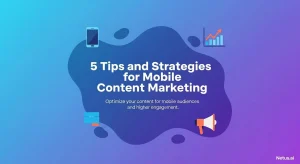
Tips and strategies for mobile content marketing | NetusAI
5 Tips and strategies for mobile content marketing Mobile content really matters a lot these days. Pretty much 98 percent of adults in the U.S.
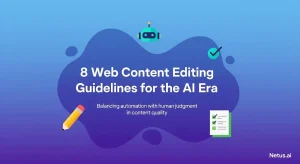
Web content editing guidelines for the AI era | NetusAI
8 Web content editing guidelines for the AI era Editing web content turns out to be pretty tough, especially when generative AI gets involved in
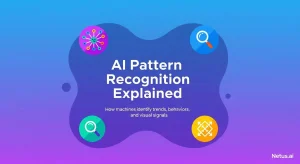
Explaining AI pattern recognition | NetusAI
AI pattern recognition explained Pattern recognition in AI really forms the backbone of what we see in artificial intelligence today. It allows machines to spot
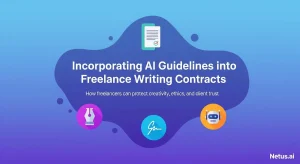
AI Guidelines in Freelance Writing Contracts | NetusAI
Incorporating AI guidelines into freelance writing contracts With AI content prevalent and ranking high on Google, freelance writing contracts must include AI guidelines. This is
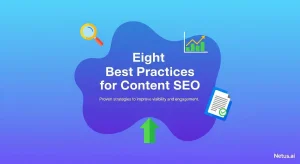
Best practices for content SEO | NetusAI
Eight best practices for content SEO Content has to show up and grab attention if it wants to do well. Content SEO takes care of

Key information regarding GPT-4's 2025 retirement | NetusAI
GPT-4’s 2025 retirement: Key information OpenAI announced plans to phase out the widely used GPT-4 model by April 2025. The key driver behind this decision

